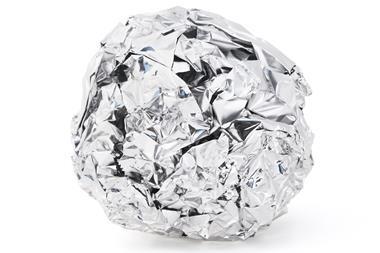As industry seeks ways to reclaim materials from waste products, consumers must play their part in the cycle of recycling
The concept of an urban metabolism isn’t particularly new – Abel Wolman wrote about it in Scientific American in 1965, and many scientists, economists, philosophers and artists before him have drawn parallels between our built environments and organic systems. London is a beating heart, New York’s lungs are Central Park and we can all suggest candidates for which city is the final stop of the digestive system.
As a scientific model, urban metabolism is a fascinating lens through which to view the complex network of interactions that produce growth, energy and waste in our cities. Wolman warned that ‘the daily evidence of our eyes and nose’ should tell us that we cannot ignore waste nor treat its disposal casually. Today, waste is getting a lot of attention for lots of reasons. Last year I heard Rolf Halden, from Arizona State University, US, analogise water treatment and sewage plants to a giant medical observatory in which you can find all the corporeal specimens a doctor would take to diagnose a patient. Halden was quite specific about what he had found in wastewater – I don’t feel the need to repeat the list here – and how we can use these measurements to detect the impact of public health interventions, get a sense of the population’s diet, what prescribed and recreational drugs are in use, and our consumer habits. For example, the large quantities of antimicrobials such as triclocarban and triclosan present in our environment reflect the plethora of soaps and lotions in which they appear. Unfortunately, due to the average of six seconds we spend washing our hands, they probably have little efficacy – but who pays attention to evidence these days anyway?
Now, as Ida Emilie Steinmark explains, we can see signs of our society’s mental health in our environment as well, through the presence of antidepressants found in waterways and the food chains they support. The persistence and build-up of these pharmaceuticals in the environment and its wildlife is likely down to the continued use – and excretion – of them by growing urban populations. Perch are on Prozac and they’re pretty pleased about it.
So, what’s wrong with shoals of happy fish and flocks of contented birds? These animals not only didn’t ask for psychiatric medication but also risk losing their lives because of it. A relaxed prey makes an easy meal for a predator. What’s more, the impact on a range of natural behaviours – feeding and mating particularly – could have wider ramifications on the ecosystem. Rarely have I so seriously considered the libidinous proclivities of starlings.
Of course, we have the more well-known impacts of human industrialisation on the environment as well. Emma Davies’ story on recycling smartphones presents a different take on this by elevating the importance of consumer behaviour in the success of recycling industries. Interestingly, as Steinmark’s article closes with the question ‘Who is the polluter? […] is it the consumer?’, so too we find the same challenge present in Davies’ piece. Yes, without doubt industry and government has its part to play but the burden on the consumer cannot be overlooked.
As chemical industries of all kinds look to sustainable futures, better end-of-life strategies and circular economies for their products, we must remember the role we have as consumers and citizens in the ‘benign by design’ equation. By becoming more informed consumers and more responsible excreters, we might one day be able to go about our business while letting the starlings get down to theirs undisturbed.












No comments yet